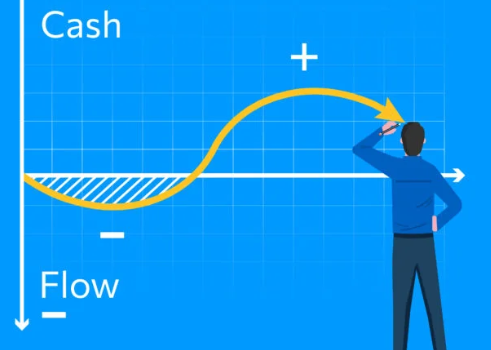
Managing cash effectively is crucial for any business, regardless of its profitability. A common reason many businesses struggle or even fail is due to poor cash flow management—not a lack of revenue. Without a clear understanding of how and when money moves in and out, it becomes difficult to cover expenses, invest in growth, or seize new opportunities.
Cash flow forecasting is an essential practice that allows you to anticipate financial gaps, make proactive decisions, and maintain control over your financial health. This guide will walk you through how to build an accurate cash flow forecast, the key tools to support it, and how to improve forecasting precision over time.
What Is Cash Flow Forecasting?
Cash flow forecasting involves estimating the cash inflows and outflows over a specific time frame—usually weekly, monthly, or quarterly. This gives you visibility into whether your business will have enough cash to meet its obligations, such as paying suppliers, employees, and rent, or whether you’ll need to take action to avoid a cash crunch.
Especially for businesses with seasonal revenue or inconsistent payment cycles, forecasting is vital. It helps answer questions like:
- Will I have enough cash to cover next month’s payroll?
- Can I afford to invest in new equipment or staff?
- Is there a risk of running short, and when might it occur?
Forecasting helps you anticipate rather than react—and that can be the difference between survival and success.
How to Create an Effective Cash Flow Forecast
Creating a forecast may sound complex, but it becomes manageable when broken into steps. Here’s how to do it:
1. Set Your Forecasting Period
Decide the length of time your forecast will cover. Short-term forecasts (4 to 12 weeks) are great for day-to-day planning, while longer-term forecasts (up to 12 months) are useful for budgeting and strategic decision-making.
Choose a timeframe that aligns with your business model and operational rhythm.
2. List All Incoming Cash
Identify every expected cash inflow for the chosen period. Common sources include:
- Sales revenue
- Customer invoice payments
- Loan proceeds or investment funds
- Tax refunds or grants
- One-off receipts
Use reliable data—such as historical trends, confirmed orders, or existing contracts—to avoid overestimating.
3. Record All Expected Outgoing Cash
Next, outline all forecasted expenses. These may include:
- Fixed costs: rent, salaries, loan repayments
- Variable costs: utilities, materials, shipping
- Irregular costs: tax obligations, new equipment
Referring to past expenses or accounting data can help you generate realistic projections.
4. Calculate Net Cash Flow
Subtract your total outflows from your total inflows:
Net Cash Flow = Total Inflows – Total Outflows
This figure shows whether your business is expected to be cash-positive or cash-negative in each period.
For example, if you bring in £25,000 in a given month and spend £18,000, your net cash flow is:
£25,000 – £18,000 = £7,000 (positive cash flow)
This insight helps in making timely decisions, like postponing a purchase or securing a credit line.
5. Maintain a Running Cash Position
Once you’ve calculated net cash flow for each period, build a running balance. Add each period’s net cash flow to the previous balance to monitor trends over time.
This step is critical for identifying:
- Low-cash warning signs
- Opportunities to reinvest
- Times when external financing may be needed
A live dashboard or spreadsheet makes it easier to track and revise your position as conditions change.
6. Regularly Review and Refine
Forecasts improve with regular reviews. Compare your predictions against actual cash movements and analyse the discrepancies.
For example, if you predicted £20,000 in payments from clients but received only £15,000, that £5,000 shortfall should prompt an investigation. Was a payment delayed? Was a contract cancelled?
Regular variance checks lead to better accuracy and forecasting discipline over time.
Tips for More Accurate Forecasting
To make the most of your forecasts, apply these best practices:
- Update forecasts regularly to reflect new business activities or unexpected changes.
- Use live dashboards that sync with accounting tools for real-time visibility.
- Monitor customer payment habits to better predict cash inflows.
- Run monthly variance analyses to learn from past deviations.
- Maintain a cumulative cash balance to track liquidity over time.
These habits not only improve forecast reliability but also help you stay agile in uncertain market conditions.
Why Cash Flow Forecasting Matters
A robust cash flow forecast empowers business owners to:
- Avoid missed payments or payroll issues
- Plan ahead for big purchases or tax deadlines
- Spot funding needs before they become urgent
- Build investor confidence with clearer financial planning
No matter the size of your business, forecasting should be a non-negotiable part of your financial toolkit.
Final Thoughts: Take Control of Your Cash Flow
Cash flow forecasting doesn’t require a finance degree or expensive software—just consistent planning and attention to detail. By following a structured process, regularly updating your projections, and responding quickly to emerging trends, you can steer your business with confidence.
Forecasting is not just about numbers—it’s about ensuring stability, enabling growth, and unlocking the full potential of your business.









